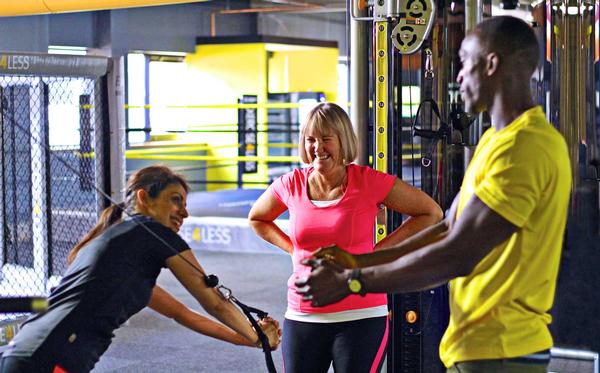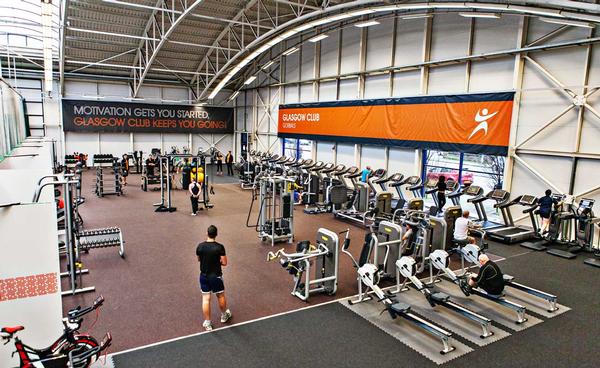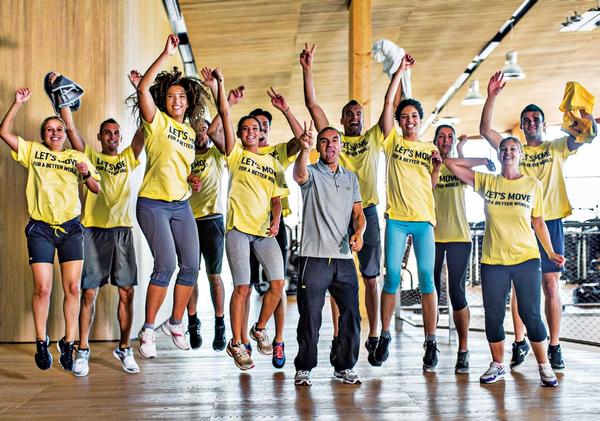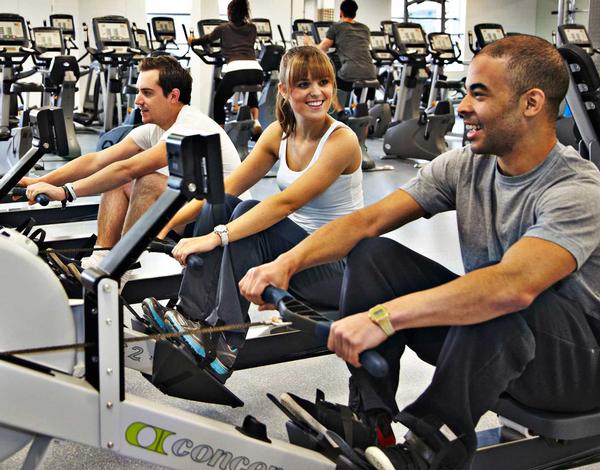 SELECTED
ISSUE
SELECTED
ISSUE
|
|
Leisure Management - Talking retention

Retention series

|
|
| Talking retention
|

While it’s true that 13.7 per cent of the UK population now has a gym membership – the highest ever level – member retention remains a real challenge. Abigail Harris speaks to five UK retention experts to find out where it’s being done well
|
|
|

|
Client: Active Stirling, UK
Programme: 6x6
Dr Paul Bedford
Retention Guru
Active Stirling has doubled its membership since joining my 6x6 project in July 2014, which saw its team engage in six one-day business growth training sessions across a six-month period. This led to the operator consolidating its 20+ membership packages to just four, which include access to all activities.
The leisure trust manages the £27.3m Stirling Sports Village, which includes outdoor facilities, as well as The Peak, offering a nine-court sports hall, two swimming pools, sauna/steam, three fitness studios, a 100-station gym, a climbing wall and a curling/ice skating rink.
Matthew Bunnell, Active Stirling’s head of health & wellbeing, told me: “Having so much activity choice through the all-inclusive memberships has encouraged users to try new things. It’s also helped spread members around and reduce the bottleneck that could form in the gym, so there are fewer complaints too.”
But the biggest difference is the rise in memberships – from 3,000 to 6,000 in just six months, with 20+ members still signing up each day and significantly fewer leaving, meaning the trust is adding 300–400 net members each month.
I asked Matthew what factors he thought had driven this, and he replied: “It was the change in our focus and our membership packages. Our Group membership is truly unique. For just £79 a month, any mix of four people can join on one membership. This has definitely helped with retention as it adds to the social environment. The more links you have, the more likely you are to stay.
“Since launching in April 2015, we’ve had 3,000 people sign up to this package. In addition, less than 10 per cent of all cancellations are from Group members.”
Historically the trust saw seven months of the year with a net membership loss and just five with a net gain, leading to a reduction in the overall membership figures. Now Active Stirling is seeing a year-on-year increase in membership income of 20 per cent.
"Having so much activity choice through the all-inclusive memberships has encouraged users to try new things" - Matthew Bunnell, Head of Health & wellbeing, Active Stirling
| |


|

The Peak offers a wide range of facilities, including a curling rink |
|
|

|
Client: Xercise4Less, UK
Programme: Listen360
Jon Nasta
Director
Retention Solutions
In the past, by the time Xercise4Less knew a member was in danger of cancelling, that member was already out of the door; the company needed to find a new way of engaging with ‘at risk’ members. In July 2013, it began working with Retention Solutions’ Listen360 member feedback service, which also gives a rolling NPS score for each of the 34 Xercise4Less sites.
There were two key areas that attracted the budget brand to the service.
Firstly, members giving an NPS score of six or lower would be highlighted on an in-club dashboard for the manager to contact. To date, using this method, Xercise4Less has been able to move 1,313 members from being classed as brand detractors to brand promoters. Each week, across the estate, club managers speak to more than 300 members and avoid cancellations before they happen. Although that’s just 10 per cent of members, over a year it represents well in excess of 90,000 potential cancellations.
Secondly, key word analysis of member feedback enables Xercise4Less to see exactly what members feel is done well and not so well, in each club and across the business as a whole. Knowing what members are talking about on a weekly basis gives the company the power to make operational decisions in an objective way.
In July 2013, Xercise4Less’ overall brand NPS score was 32. Just over a year later, the average NPS score across the estate was 53, with some clubs over 80. Joe Hall, Xercise4Less’ head of member engagement, says: “We now put so much store in the system that we run monthly competitions based around KPIs such as NPS percentage improvement.”
| |


|

Xercise4Less’ average NPS score rose from 32 to 53 in just one year |
|
|
 |

3. WHEN SUPPLY MEETS DEMAND |
 |
Client: Glasgow Life, UK
Programme: GYMetrix
Rory McGown
MD
GYMetrix
Glasgow Life boosted retention rates and increased membership by 45 per cent at its Gorbals site after working with us to solve the problem of low equipment availability.
The leisure trust, which operates 30 venues including 22 gyms, invited GYMetrix to conduct a study at Glasgow Club Gorbals in September 2013. The 45-station gym had 2,788 members, but growing demand was putting pressure on the facility and had reduced how available members found equipment.
Bob Peck, commercial development manager for Glasgow Life, told me they knew growing demand had far outstripped availability – particularly for free weight equipment – but it was difficult to quantify without hard data.
Our study showed very low levels of equipment availability, which was hampering growth and negatively impacting retention. Among members who remained, customer satisfaction was low, with the facility recording a Net Promoter Score (NPS) of just 11.
Glasgow Life moved the gym to a sports hall, expanding its capacity to 93 stations, and invested in equipment that had been shown by GYMetrix to have the lowest levels of availability – an extensive list, as there were shortages in all areas, but with a particular focus on free weights benches, lifting platforms, cable stacks, treadmills, cross-trainers and resistance machines.
Just six months after expanding the gym, the club reported a 422 per cent increase in the time free weight equipment was used, due to increased availability now meeting the high demand.
In addition, the facility had attracted 1,265 new members – a 45 per cent growth. Among those who had been members before the refurb, retention rose to a level 5 per cent higher than at other Glasgow Life gyms. NPS also saw a huge uplift to 62.
| |


|

The gym was moved and expanded to increase equipment availability |
|
|
 |

4. MEANINGFUL RELATIONSHIPS |
 |
Client: Crow Wood, UK
Programme: Stick Around
Guy Griffiths
Director
GG Fit
Crow Wood health club in Burnley was looking for differentiators to lift service levels and keep ahead of local competition.
With an initial focus on engaging more with members, the club started using the GGFit Stick Around service in early 2014. This system automatically triggers messages to new members at key stages (welcome, touch base, congratulations) and members absent for 24 days or longer (we miss you, wish you were here) by SMS, email and post, depending on member preferences. If they’re still absent at 30 days, a follow-up is sent. Message content is worded to encourage members back into the club to have a meaningful interaction with staff; over half of absent members return in the week after the first contact. The second message is even more successful, leading to a return of 80 per cent of members.
Oliver Brown, director at Crow Wood, says: “We know it works because members approach staff apologising for their absence and requesting a programme review or asking to book a class.”
In October 2014, Crow Wood upgraded to Technogym’s MyWellness cloud to bolster member engagement online through exercise tracking, fitness challenges and improved communication with members. GGFit handled the on-boarding, with emails to promote the system and set-up of fitness challenges.
A particular highlight was when 660 members collected over three million MOVEs – Technogym’s unit of measure for movement – to help Crow Wood win the UK arm of Technogym’s Let’s Move For A Better World global digital challenge in March 2015. This challenge aims to get communities active and sharing their training experiences online, as well as promoting wellness education in schools.
From September 2013 to September 2015, Crow Wood’s 12-month member retention increased from 72 to 78 per cent, and in the last 12 months average membership length increased from 70 to 72 months, with active members up by two-thirds to 66 per cent.
Additionally, in September 2015, 1,070 members averaged 5.6 workouts a month – in September 2014, 987 gym members averaged 4.9 workouts a month.
"From September 2013 to September 2015, Crow Wood’s active membership was up by two thirds to 66 per cent, using GGFit’s Stick Around service"
| |


|

Crow Wood won the UK arm of Technogym’s Let’s Move initiative |
|
|

|
Client: The Gym Group, UK
Dr Paul Bedford, Retention Guru
Rob Gregory, LTH Consulting
Last year, we were given the mandate to analyse retention performance at UK low-cost operator The Gym Group, with the brief of delivering new insights into member behaviour and creating a retention model that predicts cancellation.
We used survival analysis across more than 800,000 member records to model probabilities of cancellation throughout their lifetimes. This took into account a variety of influencing factors, including gender and frequency of use, but also wider factors such as patterns of use and visit duration, busy-ness at peak times, pricing and the impact of prices changes, the impact of training with a friend, and acorn-type demographic segmentation.
The six-month project enabled us to quantify the effect of these individual factors on the probability of membership cancellation and expected tenure, which in turn allowed The Gym Group to identify high-risk points in a member’s lifetime across the group’s now 67 UK gyms.
Andy Robinson, head of analytics for The Gym Group, believes the project has been valuable to their business. “It has given us a better understanding of our customer lifecycle and behaviour, and has ultimately changed how we interact with members to help them form repeatable exercise habits,” he told us.
“For instance, we’re now looking at the induction process to ensure that members’ initial contact is a good one, making sure the equipment fits the usage better and the class scheduling helps create a regular visit pattern.
“It’s clear that our data-driven approach to decisions is increasingly paying dividends. Over the last 12 months, we’ve seen a 10 per cent reduction in attrition. This core analysis of our members’ behaviour will continue to play a role as we open new gyms in new catchment areas and continue to learn, evolve and improve our model.”
"It’s clear that our data-driven approach to decisions is increasingly paying dividends" - Andy Robinson, head of analytics, The Gym Group
| |


|

The Gym Group has seen a 10 per cent drop in attrition in the past year |
|
|
 |
| Originally published in Health Club Management 2016 issue 1
|
|
 |
|